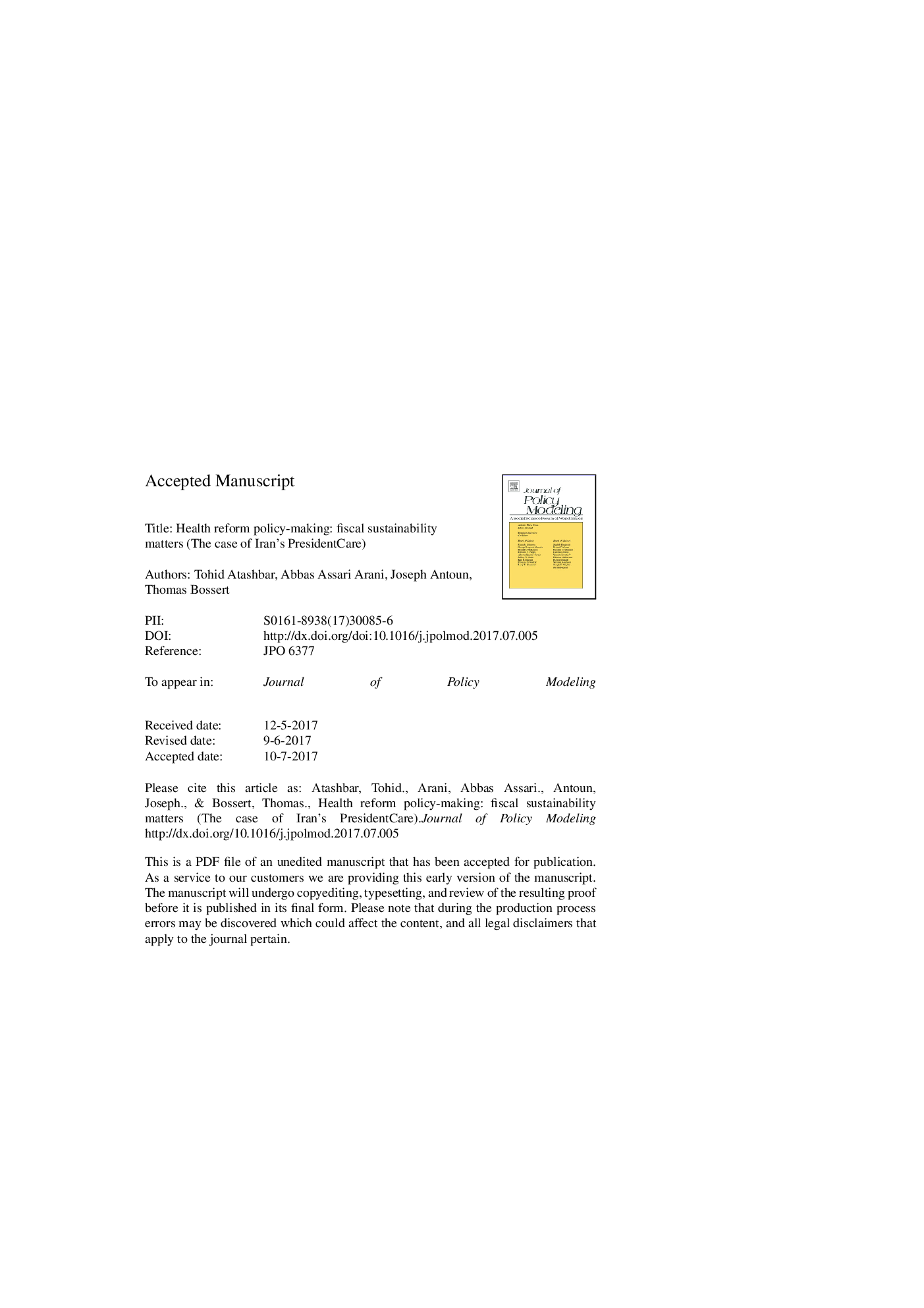| Article ID | Journal | Published Year | Pages | File Type |
|---|---|---|---|---|
| 7369180 | Journal of Policy Modeling | 2017 | 33 Pages |
Abstract
Two years after the implementation of RouhaniCare, this study aims to review and analyze the main bottleneck of the plan: Fiscal sustainability. The findings of this study, based on a fiscal simulation model, show that, despite some favorable changes in health indicators, including a considerable decrease in catastrophic health expenditure and a reduction in out-of-pocket health costs for inpatient services, the gap to finance HRP will threaten the continuation of the reform in the coming years. HRP will cost approximately 2% of GDP in the medium-long term. Considering the current path of government revenues, this is fiscally unsustainable, and government will face a menu of options in the near future: reallocating current expenditures in favor of health sector spending; increasing tax revenues, including imposing new health sector linked corrective taxes; and reforming HRP so that it places less of burden on public finance spending.
Related Topics
Social Sciences and Humanities
Economics, Econometrics and Finance
Economics and Econometrics
Authors
Tohid Atashbar, Abbas Assari Arani, Joseph Antoun, Thomas Bossert,
